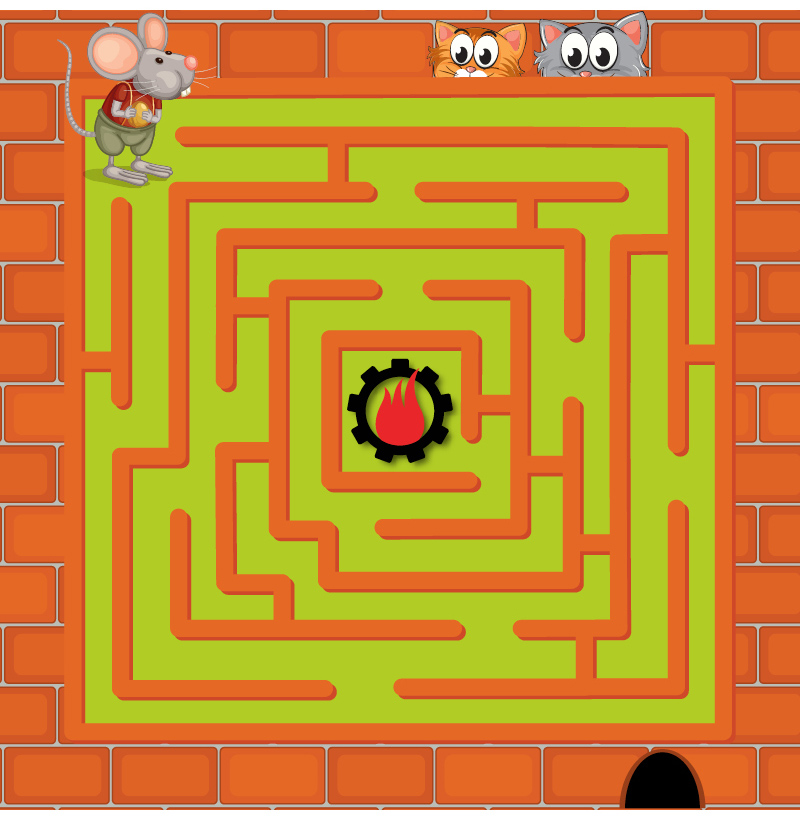Not So Temporary

What a face!!! :)))))))))))))
Growing up, I loved to read the comics. I’d wait for Dad to finish with “the paper” (yes, we actually got two delivered to the house a day … one in the morning and one later in the day .. and a big one on Sundays!!) – I liked many of the characters, especially Spiderman and Funky Winkerbean. Comics are always a simple escape from the day-to-day. And many times, just put a smile on my face. Today marks a fun anniversary in the history of comics. On this day in 1930, Walt Disney himself wrote the first Mickey Mouse comic strip.

Coming off the success of producing “shorts” for the film industry (I think everyone knows Steamboat Willie), Walt himself took on the task of creating a daily comic strip – talk about a PIA (pain in the @%$) Job! With the help of his drawing assistant Ub Iwerks and his inking assistant Win Smith, Mickey and Minnie came to life – and the strip lasted over 90 years!! Here’s a little history on the series, the people behind the drawings and the themes, many based on the events of the day, that drove the success for so many years. Enjoy, and thanks to disneydiary.com, Wikipedia and YouTube. Enjoy!
Walter Elias Disney was born in 1901 in Chicago to a family of modest means. In 1919, he met Ub Iwerks while working in commercial art studios in Kansas City. Three years later, the two started their own, ultimately unsuccessful, animation studio. Disney regrouped in California, forming the company we know today with his brother, Roy, as business manager and Iwerks as lead cartoonist.
Though it may seem like Mickey Mouse has always been with us, this most well-known of cartoon characters sprang to animated life on November 18, 1928. The high-spirited, mischievous mouse debuted in Steamboat Willie, a short film designed and animated by Ub Iwerks, the chief animator with the then-nascent Walt Disney Company, with direction from Walt Disney. They cast Mickey Mouse as a shipmate on a steamboat captained by a surly cat. Scheduled to be the opening for a feature-length film, Steamboat Willie was given an initial modest run at the Colony Theater in New York. But audiences and critics went wild for the impish, round-bellied mouse and for the premiere of the first cartoon with synchronized sound.
Two weeks later, Steamboat Willie was re-released at the Roxy, also in New York, and the largest theater in the world at the time. It made silent animation obsolete and launched the Disney empire, as Walt proclaimed…”sound is here to stay”.
After releasing Steamboat Willie, the struggling company began to thrive and to introduce other characters—like Donald Duck and Goofy—into popular culture. As the American economy crumbled during the Great Depression, the Walt Disney Company rose, a paradox explained by the delight, even relief, that its cartoons brought to Americans and audiences worldwide, hungry for a respite from harsh daily realities.
A Mickey Mouse comic strip was suggested by Joseph Connolly, the president of King Features Syndicate, in a July 24, 1929 letter to Disney animator Ub Iwerks: “I think your mouse animation is one of the funniest features I have ever seen in the movies. Please consider producing one in comic strip form for newspapers. If you can find time to do one, I shall be very interested in seeing some specimens.”
The comic strip launched on January 13, 1930 was written by Disney himself, with art by Ub Iwerks. The strip begins with young Mickey as an optimistic, imaginative young mouse living on a farm, and dreaming of becoming a great aviator like his hero, Charles Lindbergh. In a sequence based on the 1928 short Plane Crazy, Mickey puts together a homemade plane, and takes a flight with his girlfriend Minnie. She falls out of the plane, and Mickey travels through a storm to land on a deserted island, inhabited by fierce natives who want to cook him alive.
As these first strips were being released, Iwerks left the Disney studio, signing a contract with Disney competitor Pat Powers to leave Disney and start an animation studio under his own name. Win Smith, who had been inking the strips, took over the penciling as well with the February 10th strip. Smith left the studio in April after a fight with Disney, who wanted him to take over writing the strip.
As a “temporary replacement”, Disney asked a young inbetweener at the studio named Floyd Gottfredson to fill in. Gottfredson’s first strip was published on May 5, and he took over the scripting two weeks later. He would continue as the creative force of the strip for more than 45 years. (WOW!).
While the early months of the strip did have a loose plot, the pace and style were still the standard gag-a-day approach to comic strips. With adventure and daily continuity strips like The Gumps and Wash Tubbs becoming increasingly popular, King Features Syndicate asked Disney to make Mickey Mouse a more serious adventure strip.
This led to the first adventure storyline, “Mickey Mouse in Death Valley”, which ran from April 1 to September 20, 1930. The story—begun by Smith, and continued by Gottfredson—involves a crooked lawyer, Sylvester Shyster, and his thuggish associate Peg-Leg Pete, who kidnap Minnie in order to find a map to her Uncle Mortimer’s hidden gold mine in Death Valley. Mickey and Minnie race Shyster and Pete to the desert, to lay claim to the mine.
Over decades Gottfredson used extended main themes inspired from Disney’s animation department to support the storylines, such as “The Great Orphanage Robbery”, The Case of the Vanishing Coats”, “The Robin Hood Adventure”, “Mighty Whale Hunter” and “Lil Davey” based on Davey Crockett.
Years later, many of these themes became book titles, extending the series into children’s bedrooms. I can remember reading some of the storybooks to the girls when they were little (For a full list, CLICK.) and now enjoy reading to the grandkids.
Thanks Walt and team!
::::::::::::::::::::::::::::::::::::::::::::::::::::::::::::::::::::::::::::::::::::::::::
DO YOU LIKE CONTESTS?
Me, too.
As you may know the Kowalski Heat Treating logo finds its way
into the visuals of my Friday posts.
I. Love. My. Logo.
One week there could be three logos.
The next week there could be 15 logos.
And sometimes the logo is very small or just a partial logo showing.
But there are always logos in some of the pictures.
So, I challenge you, my beloved readers, to count them and send me a
quick email with the total number of logos in the Friday post.
On the following Tuesday I’ll pick a winner from the correct answers
and send that lucky person some great KHT swag.
So, start counting and good luck!
Oh, and the logos at the very top header don’t count.
Got it? Good. :-))))
Have fun!!
::::::::::::::::::::::::::::::::::::::::::::::::::::::::::::::::::::::::::::::::::::::::::








